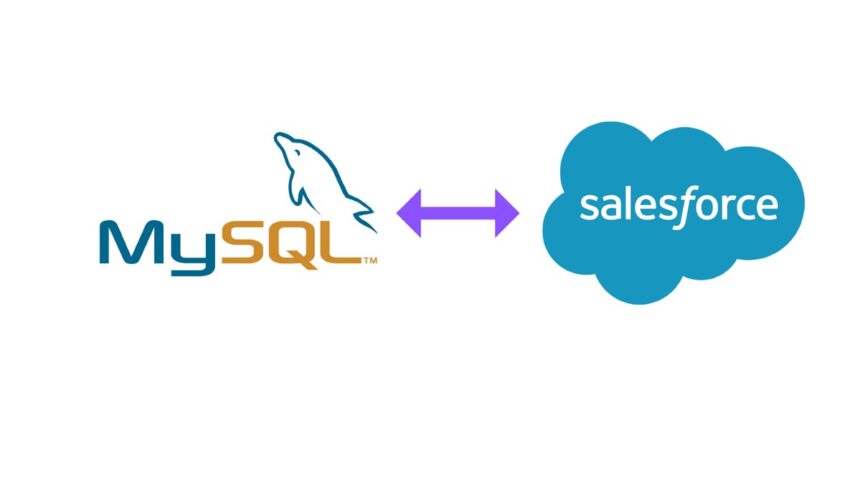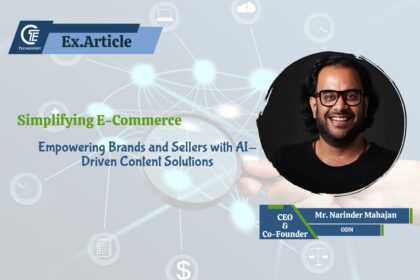Saving data on a floppy disk from one system and then copying it to another is a strategy covered with layers of dust. Even CSV file usage for data transfer between tools is not so common nowadays, though some people are still relying on it. This approach is also sometimes used when exchanging data between Salesforce and MySQL. However, the evolvement of technologies triggers new trends in the Salesforce MySQL integration.
This article describes the recent trends and methods in the sphere of Salesforce integration with databases on the example of MySQL. It also discusses the possible future trends in this industry.
Current Trends in Salesforce Integration with Databases
The case of bringing Salesforce and MySQL together is very frequent in production. At the same time, it’s very interesting and always challenging due to the difference in data forms and structures involved. Also, the volume of data transferred back and forth between those apps can be rather considerable.
Another great challenge is the detection of errors in data integration and a clear understanding of what needs to be refined. This often appears to be a stumbling block on the way to smooth data transfer between two systems. Luckily, modern trends and approaches have already addressed this problem and offered decent solutions.
Below, find a detailed description of the recent trends in Salesforce integration with MySQL and other databases.
iPaaS Solutions
Integration Platform as a Service (iPaaS) is a cloud-based tool designed to unite various applications, systems, and data sources within one system. Such platforms could be a centralized point of the organization’s IT environment. They allow users to design, deploy, manage, and monitor integration workflows. As a result, this helps businesses to optimize the data integration processes, improve data visibility, and enhance operational efficiency.
No-code Approach
The no-code approach in data integration refers to the use of visual, drag-and-drop interfaces and pre-built connectors, which enable the creation of data integrations without writing any code. This approach democratizes the process of data integration between Salesforce and MySQL. Tools implementing the data integration approach are of particular value for business users and non-technical professionals.
Here are some key aspects of the no-code approach in data integration:
- Drag-and-drop interface
- Pre-built connectors
- Data mapping
- Data transformation
- Template-based workflow
- Self-service integrations
- Automated deployment and monitoring
- Scalability
Real-Time Data Streaming
Real-time data streaming involves the continuous and near-instantaneous transmission of data from the source to the destination. This contributes to the timely processing and analysis of the data as it becomes available. This approach contrasts with traditional batch processing, where data is collected and processed in predefined intervals
Real-time data streaming has become increasingly important when transferring Salesforce data to MySQL. In particular, this helps to detect profiles at risk in a timely manner and prevent fraudulent actions.
Also, real-time data transfer from Salesforce to MySQL greatly enhances supply chain management. That way, suppliers always have the most recent data on the inventory levels, which allows them to respond to any disruptions in delivery and plan everything in advance. Sending data from MySQL to Salesforce greatly improves customer satisfaction rates as sales team members are always aware of the products in disposition and don’t make fake promises.
Future Trends in Salesforce MySQL Integration
Even though modern tools for Salesforce connection to databases offer fast and effective ways of data exchange, there are still many issues associated with many challenges and issues. Thus, there are emerging trends that promise to improve the data flow between the two systems. So here, we’d like to have an overview of the future trends with the aim of taking Salesforce and MySQL integration to the next level.
Containerization and Microservices
Incorporating containerization and microservices into data integration architectures enables organizations to build scalable, agile, and resilient integration solutions. They are very likely to adapt to changing business requirements and data volumes. That way, organizations can accelerate digital transformation initiatives, improve time-to-market, and unlock the full potential of their data assets.
Here are some particular features of containerization and microservices that advance data integration:
- Isolation. Docker and other containerization technologies are lightweight, isolated environments. They are perfect for running integration components and services. According to the isolation paradigm, each component of the integration flow (connectors, transformations, mapping, etc.) can be packaged into a container. This ensures consistency and reproducibility across different environments.
- Portability. Containers encapsulate integration components and their dependencies, making them highly portable across different infrastructures. This simplifies the data exchange between on-premises data centers, public clouds, and hybrid environments. Overall, the features of containers make the deployment and scaling of integration solutions easier, as there is no need to detect infrastructure differences and find ways to address them.
- Modularity. Microservices split complex integration logic into smaller, manageable components. Each microservice focuses on a specific aspect of data integration, such as data ingestion, transformation, validation, or routing, making the overall system easier to understand, maintain, and evolve.
- Polyglot architecture. Microservices architecture allows organizations to use different programming languages, frameworks, and technologies for implementing individual services.
Blockchain for Data Integrity
Blockchain technology has the potential to revolutionize data integration by providing a decentralized, secure, and immutable ledger for recording data transactions across disparate systems. Blockchain protocols such as Hyperledger Fabric or Ethereum support interoperability standards and protocols for exchanging data and assets across different blockchain networks and systems.
This technology can also effectively address security and compliance-related issues. Blockchain supports zero-knowledge proofs and homomorphic encryption, enabling organizations to protect sensitive data and ensure privacy compliance in data integration processes.
Multi-Experience Integration
Transferring data between on-premises and cloud apps has always been challenging. And the case of Salesforce and MySQL integration reflects these difficulties. However, the multi-experience integration approach aims to establish consistency across multiple channels, devices, and touchpoints. In the context of Salesforce and MySQL integration, a multi-experience integration strategy aims to provide a unified and intuitive user experience.
Summary
In the future, Salesforce and MySQL integration is likely to run on microservices and containers as this approach is platform-independent and highly scalable. The integration may also incorporate blockchain technology to ensure transparent and secure data exchange, enhancing overall data integrity and security. Moreover, expect the rise of hybrid cloud integration solutions, enabling seamless connectivity between on-premises and cloud-based Salesforce and MySQL environments for flexible deployment and scalable.







